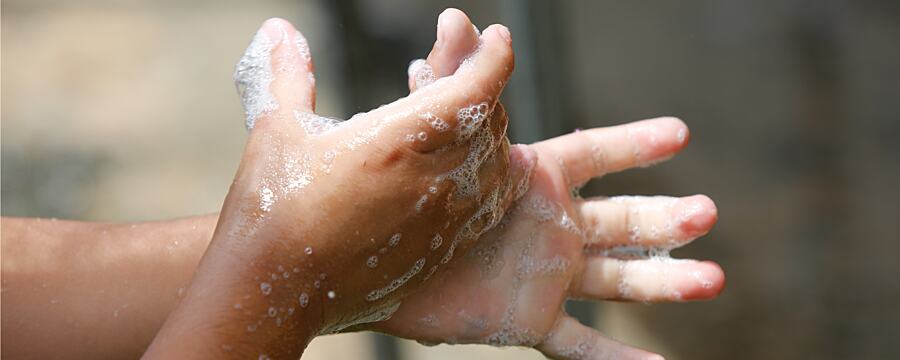Guiding Principles for Child Protection Preparedness for COVID-19
What are the guiding principles for preparedness, response, transition and recovery in the context of COVID-19?
The guiding principles for child protection in a disease outbreak that are outlined here build on the core principles in the CPMS. They were developed in 2020 by The Alliance for Child Protection in Humanitarian Action to support practitioners in principled action through all cycles of the COVID-19 pandemic. They can be found in the Technical Note: Protection of Children during the Coronavirus Pandemic (V2). The principles outlined in the CPMS Standards are foundational to these principles.
Child Protection Guiding Principles
Guiding Principle 1: Prioritize the best interests of the child and children’s voices through all stages.
When making decisions that will affect children and their well-being, children have the right to have their (1) best interests assessed and taken into account and (2) views shared freely and safely to inform the decision-making process.
Determining the child’s best interests requires an assessment of any potentially positive or negative consequences of actions that may be taken on the child’s behalf. Key strategies to involve children include:
- Adapt messages for and with the full range of children, including infants, young children and adolescents
- Provide children with appropriate information
- Listen to children
- Encourage children to express their concerns and ideas
- Build on their strengths
- Prioritize children’s and caregivers’ views in decision making
Guiding Principle 2: Apply the principles of non-discrimination and inclusion to all stages of COVID-19.
Respect for the inherent dignity, diversity and acceptance of all children is required under international law. Children shall not be discriminated against on the basis of gender, sexual orientation, age, disability, nationality, immigration status or any other reason. Humanitarian crises like the COVID-19 pandemic can increase discrimination and heighten specific children’s risk of all forms of abuse, neglect, exploitation and violence. Workers and community members need to seek diverse children’s participation while ensuring that all children have access to adapted protective resources and support.
Guiding Principle 3: Build continuity of care and protection into all stages of the crisis.
Effective programming will look different as the dynamics of the disease and response change in different contexts. It is critical to ensure the continuity and adaptation of child protection services as countries and communities move through the various stages of the COVID-19 crisis and to prepare for managing cases with long-term consequences and critical protection issues.
Guiding Principle 4: Engage governments to develop innovative, child-focused legal and policy frameworks to protect all children.
The urgency of emerging child protection risks during the pandemic can offer an opportunity for child protection actors to advocate for improved legal and policy frameworks. Advocacy efforts should ensure that measures implemented to address COVID-19 are adapted to support children’s needs at all stages of their development and are in line with international standards, including the CPMS and the Core Humanitarian Standard.
Guiding Principle 5: Engage communities to guide the child protection response.
Community engagement is critical to preventing, mitigating and responding to abuse, neglect, exploitation and violence against children during the COVID-19 crisis. Community members, including children and youth, are well-placed to identify and respond to risks: they know how to strengthen and maintain protective environments for their children and families. By working in collaboration with community members – formal and informal across all sectors, genders and ages – children will be at less risk, and communities can sustain their commitment of safety.
Guiding Principle 6: Adapt and strengthen child protection systems, both formal and informal.
The pandemic has altered protective systems for children, including formal services (e.g. social, health, education and justice services) and informal systems (e.g. family and community care networks). Strengthening systems involves developing a plan to assess, improve and adapt the parts of child protection systems that need to be strengthened while building on existing community and individual strengths to support and protect children and families.
Guiding Principle 7: Document and measure progress to assess the success of responses to child protection issues.
Assessment, measurement, evaluation and active monitoring are vital for an effective, longer-term response. Within this novel situation, each stage in each context holds new information that is important for tracking emerging risks, identifying promising practices and making decisions on programming and interventions. It is critical that appropriate, inclusive and non-discriminatory monitoring and accountability systems are integrated into the response and transition/recovery plans for all affected children, families and communities.
Guiding Principle 8: Build on protective factors while addressing risk factors.
Although there are many factors that put children at risk for experiencing violence and needing protection, there are also numerous protective factors that have the potential to mitigate and prevent these risks. The Socio-ecological Framework places the children within the family, community and society when defining the complexity of these risks while also highlighting the protective factors that can guide practitioners and policy makers as they respond to new and anticipated challenges.
Your Task
Select two of the principles and describe how you are applying or will apply these within your context.
Share this
Protecting Children during Infectious Disease Outbreaks

Protecting Children during Infectious Disease Outbreaks


Reach your personal and professional goals
Unlock access to hundreds of expert online courses and degrees from top universities and educators to gain accredited qualifications and professional CV-building certificates.
Join over 18 million learners to launch, switch or build upon your career, all at your own pace, across a wide range of topic areas.
Register to receive updates
-
Create an account to receive our newsletter, course recommendations and promotions.
Register for free







